Introduction
In the world of fitness, bodybuilding, and performance enhancement, a new acronym has taken center stage over the past decade: SARMs, short for Selective Androgen Receptor Modulators. These compounds have generated a whirlwind of interest due to claims of steroid-like benefits with supposedly fewer side effects. They’ve been marketed as the “safer” alternative to anabolic steroids, promising lean muscle growth, fat loss, and improved strength without the typical drawbacks like liver toxicity or severe hormonal imbalances.
But what exactly are SARMs? Are they truly the miracle compounds some claim them to be, or is the reality more nuanced and potentially risky? This article explores the science behind SARMs, their history, how they work, the potential benefits and side effects, their legal status, and why the conversation around them remains so controversial.
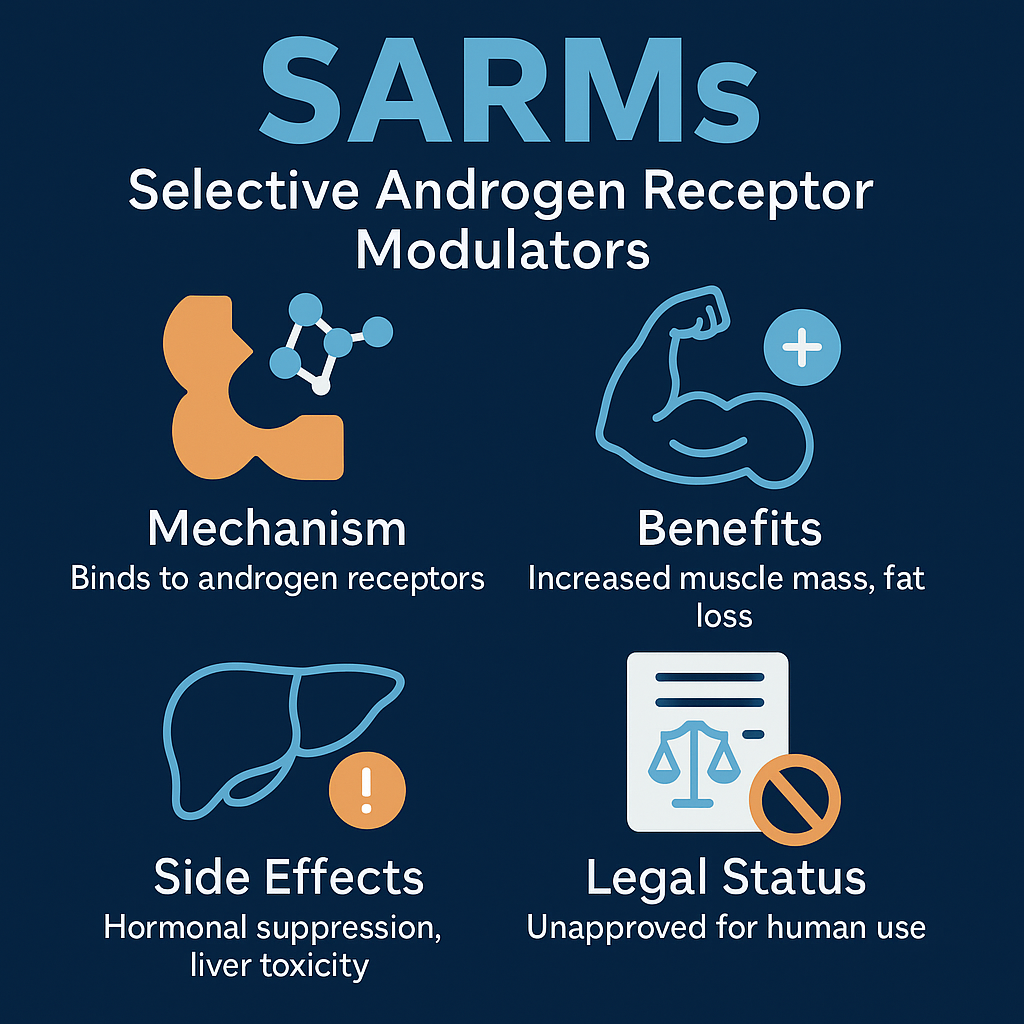
What Are SARMs (Selective Androgen Receptor Modulators)?
SARMs(Selective Androgen Receptor Modulators) are a class of therapeutic compounds that have similar properties to anabolic agents but with greater selectivity for androgen receptors. In simpler terms, they are chemical agents that bind to androgen receptors in a very specific manner, aiming to promote muscle and bone growth without affecting other organs as strongly as anabolic steroids do.
They were originally developed for medical use—particularly to help with muscle wasting diseases, osteoporosis, and hypogonadism. However, their potential for enhancing athletic performance quickly caught the attention of the fitness and bodybuilding communities.
Some of the most popular SARMs include:
- Ostarine (MK-2866 or Enobosarm)
- Ligandrol (LGD-4033)
- Testolone (RAD-140)
- Andarine (S-4)
- YK-11
- Cardarine (GW-501516) – technically not a SARM but often grouped with them
The Science Behind SARMs (Selective Androgen Receptor Modulators)
SARMs work by selectively binding to androgen receptors in certain tissues—like muscle and bone—while avoiding other tissues such as the liver, prostate, and brain. This is unlike traditional anabolic steroids, which affect a broad range of tissues and often lead to more severe side effects.
Androgen Receptors Explained
Androgen receptors are nuclear hormone receptors activated by binding with androgens, such as testosterone or dihydrotestosterone (DHT). When activated, these receptors influence the expression of specific genes that affect muscle growth, fat loss, libido, bone density, and other secondary sexual characteristics.
Traditional anabolic steroids bind to these receptors throughout the body, which can lead to undesirable side effects such as:
- Liver toxicity
- Enlarged prostate
- Hair loss
- Mood swings
- Hormonal suppression
- Gynaecomastia (development of breast tissue in men)
SARMs aim to maximize anabolic effects (muscle and bone growth) while minimizing androgenic effects (unwanted hormonal side effects).
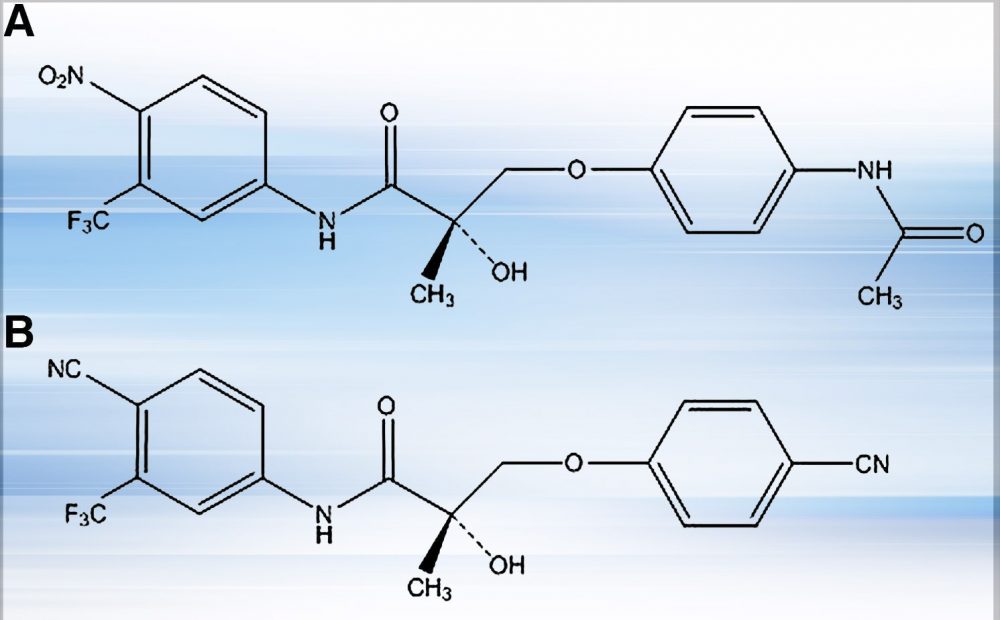
Benefits of SARMs(Selective Androgen Receptor Modulators)
The surge in popularity of SARMs among gym-goers and athletes isn’t without reason. Here are some of the most commonly cited benefits:
1. Increased Muscle Mass
SARMs have been shown to promote lean muscle growth by mimicking the effects of testosterone in muscle tissue. Users report significant gains in muscle size and strength within just a few weeks of use.
2. Enhanced Fat Loss
While not a primary function, many SARMs assist in fat oxidation by preserving muscle mass during a caloric deficit. Compounds like Cardarine (often grouped with SARMs despite being a PPARδ agonist) are known for their fat-burning capabilities.
3. Improved Strength and Endurance
Athletes and bodybuilders use SARMs to boost performance by increasing muscle strength and reducing recovery time. Some SARMs, like RAD-140 and LGD-4033, are particularly known for their strength-enhancing properties.
4. Bone Health
SARMs have shown promise in increasing bone density, making them potentially useful in treating osteoporosis or similar conditions in elderly patients.
5. Minimal Liver Toxicity (Compared to Steroids)
Unlike oral steroids, most SARMs are non-methylated, meaning they are less toxic to the liver. However, this does not mean they are entirely safe.
Common Selective Androgen Receptor Modulators (SARMs) and Their Effects
| SARM | Benefits | Half-Life | Notes |
|---|---|---|---|
| Ostarine (MK-2866) | Muscle preservation, mild gains | ~24 hours | Great for beginners |
| Ligandrol (LGD-4033) | Mass and strength | ~24–36 hours | Potent; can suppress testosterone |
| Testolone (RAD-140) | Strength, lean mass | ~16–20 hours | One of the strongest SARMs |
| Andarine (S-4) | Strength, fat loss | ~4–6 hours | Can cause visual side effects |
| YK-11 | Myostatin inhibitor, muscle mass | ~6–10 hours | Technically a SARM/steroid hybrid |
| Cardarine (GW-501516) | Endurance, fat loss | ~16–24 hours | Not a SARM; has cancer concerns |
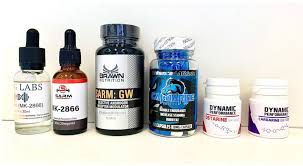
Side Effects of SARMs(Selective Androgen Receptor Modulators)
Despite the hype, SARMs are not without risk. Many users report experiencing side effects, some of which can be serious depending on the compound and dosage used.
1. Hormonal Suppression
Even though Selective Androgen Receptor Modulators are selective, they still interfere with the body’s natural testosterone production. Suppression can range from mild to severe and may require Post Cycle Therapy (PCT) to restore hormonal balance.
2. Liver Toxicity
While less hepatotoxic than steroids, some SARMs, especially at higher doses, can still stress the liver. Blood tests have shown elevated liver enzymes in some users.
3. Mood Changes and Aggression
Some users report increased irritability, aggression, or mood swings during or after SARM use.
4. Hair Loss and Acne
Androgenic effects like hair thinning or acne can still occur, especially in genetically predisposed individuals.
5. Vision Problems
Andarine (S-4) is known for causing yellow-tinted vision and difficulty adjusting to darkness, due to its effect on ocular receptors.
6. Unknown Long-Term Effects
Perhaps the most concerning issue is the lack of long-term human studies. Most clinical data on SARMs are preliminary or unpublished. Their long-term impact on organs, hormones, and overall health remains largely unknown.
Legal Status of SARMs
SARMs occupy a legal gray area in many parts of the world. Here’s a breakdown of their current status:
- United States: SARMs are not approved by the FDA for recreational use. They are considered research chemicals and can be purchased legally for “research purposes,” but selling them as dietary supplements or for human consumption is illegal. SARMs are also banned by WADA (World Anti-Doping Agency).
- UK and EU: Similarly, SARMs are legal to buy for research, but illegal to market for bodybuilding or athletic use.
- Australia: SARMs are classified as Schedule 4 substances, meaning they require a prescription and are not legal for general sale.
- Canada: SARMs fall under Schedule IV drugs, and their use without prescription is illegal.
Despite regulatory attempts, SARMs remain readily available online, often under the guise of research materials or “legal steroids.”
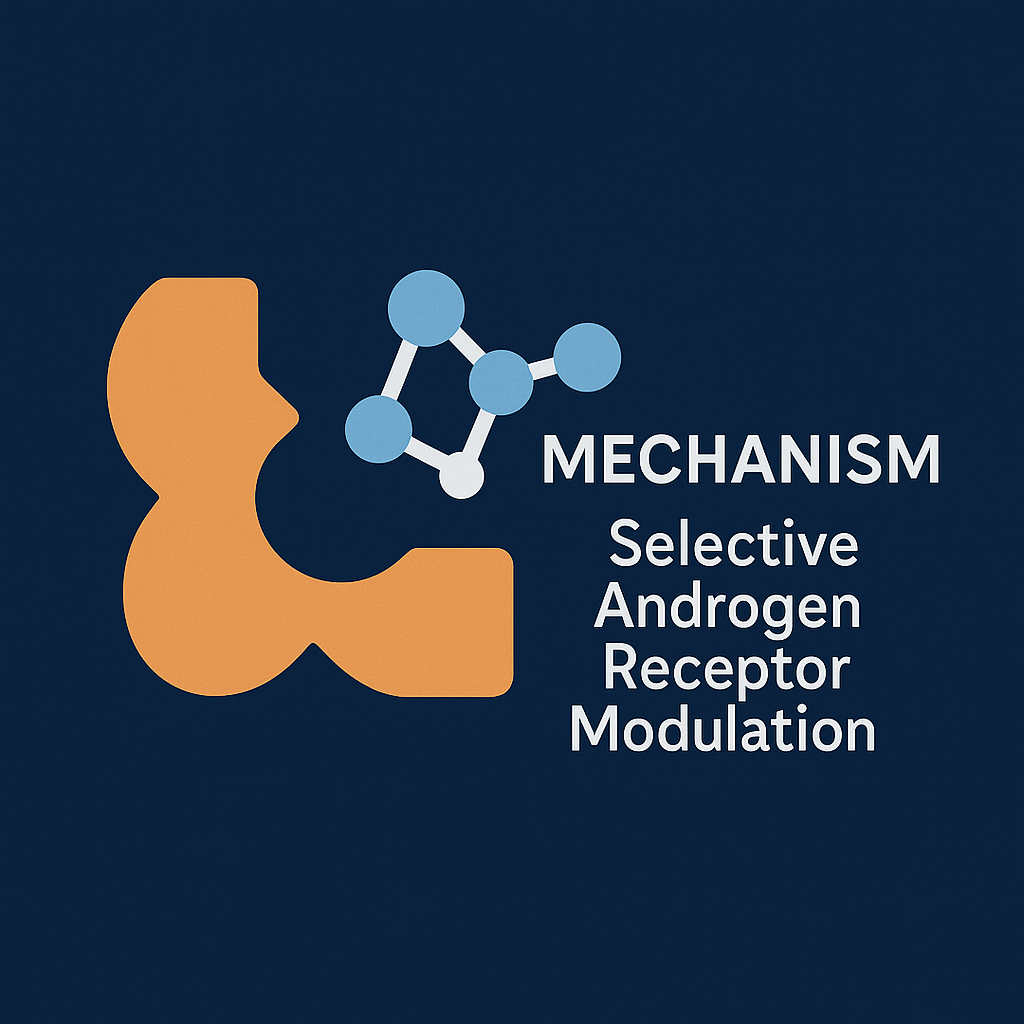
Selective Androgen Receptor Modulators (SARMs) vs Steroids
| Aspect | SARMs | Anabolic Steroids |
|---|---|---|
| Selectivity | High (target specific tissues) | Low (affects many tissues) |
| Liver Toxicity | Generally lower | High (especially oral steroids) |
| Hormonal Suppression | Moderate to high | Very high |
| Legality | Gray area | Often controlled substances |
| Side Effects | Mild to moderate | Severe and well-documented |
| Long-Term Research | Limited | Extensive (but mostly negative) |
While SARMs are less aggressive, they are not harmless, and the lack of long-term research means users are essentially experimenting on themselves.
Post Cycle Therapy (PCT) and SARMs
One of the most misunderstood aspects of SARMs is their impact on natural testosterone. Even with their selective action, SARMs can suppress the hypothalamic-pituitary-gonadal (HPG) axis, leading to reduced endogenous testosterone production.
This suppression means that after a cycle of SARMs, users often require Post Cycle Therapy (PCT)—typically consisting of compounds like Clomid (clomiphene citrate) or Nolvadex (tamoxifen)—to help restore hormonal balance.
Skipping PCT can result in:
- Low libido
- Fatigue
- Depression
- Muscle loss
- Hormonal imbalances
The Risks of Unregulated Products
Perhaps the biggest danger of SARMs is the lack of regulation in how they’re manufactured and sold. Studies have shown that many products labeled as SARMs:
- Contain different compounds than listed
- Have incorrect dosages
- Are contaminated with steroids or other drugs
In one study published in JAMA (2017), 52% of SARMs sold online contained unapproved substances, and 25% didn’t contain any active SARM compound at all.
This means users are not only gambling with the known risks—but also unknown contaminants.
Medical Research and Future Uses
Despite the risks, SARMs aren’t all bad. In clinical settings, they show real promise for:
- Treating muscle-wasting diseases
- Improving bone density in osteoporosis
- Managing age-related sarcopenia
- Helping cancer patients regain strength
If developed responsibly and thoroughly tested, SARMs could become a powerful tool in modern medicine.
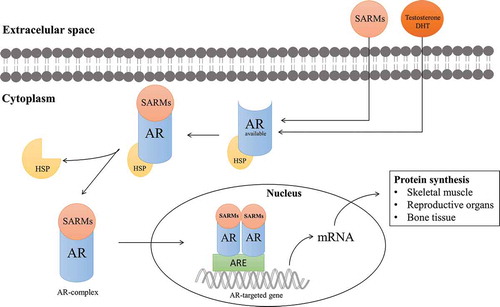
Conclusion: Weighing the Promise and Peril
SARMs represent a fascinating frontier in performance enhancement and medical therapy. Their ability to promote muscle growth and fat loss with fewer side effects than traditional anabolic steroids has earned them a place in the spotlight. But that light casts shadows.
The lack of regulation, insufficient research, and growing list of side effects suggest that SARMs are not the risk-free magic pills they’re sometimes portrayed as. While they may be useful in certain medical contexts, recreational users are often flying blind, relying on anecdotal evidence and untested products.
If you’re considering SARMs, it’s critical to:
- Do your research thoroughly
- Understand the risks
- Use third-party tested products (if any)
- Consult a healthcare professional
- Have a plan for PCT
Ultimately, the best gains in fitness still come from consistent training, proper nutrition, and rest. SARMs may provide a shortcut—but like all shortcuts, they come with hidden costs.
